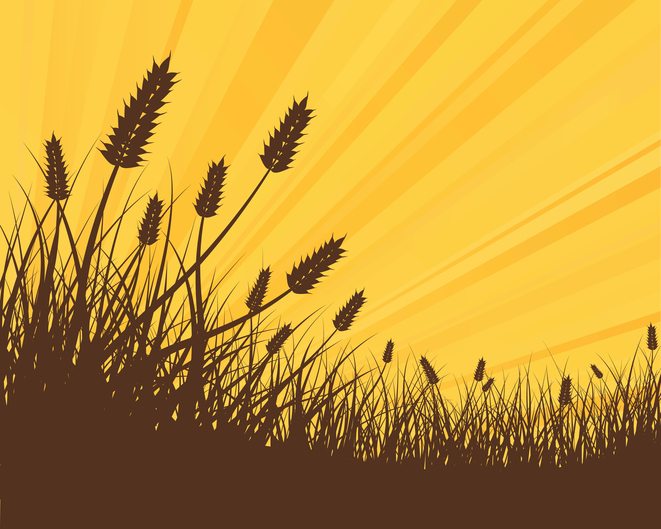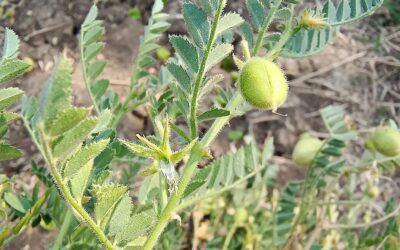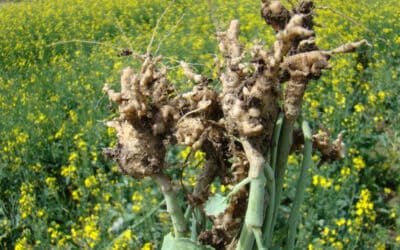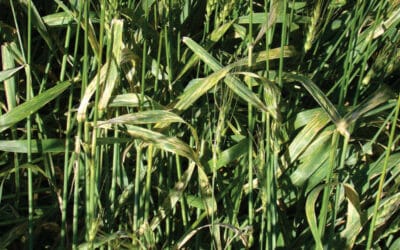“You need to ask yourself some basic questions when estimating the risk of using fungicides,” says Harry Brook, crop specialist at the Alberta Ag-Info Centre. “Asking them can lead to an improved chance that a fungicide will be worth the application.”
Brook adds that there are two main cases for spraying fungicide. “They include diseases that have not yet shown symptoms and those that are showing symptoms. The risk factors for each has to be assessed separately.”
The easiest risk to assess is for those diseases that already show plant symptoms before spraying, and those are usually leaf diseases.
“Presence of disease symptoms on the lower leaves, coupled with moist weather conditions, is conducive to further spread of the disease and usually means fungicides will be a worthwhile investment,” he says. “These diseases include scald and net blotch in barley, septoria and tan spot in wheat, ascochyta and mycospaerella in peas, and blackleg in canola.”
“If no symptoms are presenting, it is debatable that spraying will pay. With leaf diseases, it is important to preserve the healthy leaf area for the grain and seed filling part of the life cycle.”
Brook says that a more difficult case concerns the need to spray prior to any symptoms appearing, and it is more of a gamble in the case of sclerotinia in canola and fusarium head blight in wheat.
“You must consider the previous year’s occurrence in susceptible crops, current and near term weather conditions, your crop rotation, the particulars of the infectious agent and crop and spraying costs. Scorecards can help with the risk assessment. Canola Council of Canada has created a sclerotinia scorecard (PDF, 621 KB). The fusarium risk tool is available on the Alberta Climate Information Service during June, July and August – the susceptible period.”
He adds that timing of application of the fungicide is crucial to ensure the protection arrives at the appropriate time. Fungicides only translocate a small distance on the leaf, so adequate coverage and water volumes are required to maximize the protection received from spraying.
Another consideration is air temperatures when applying and the mechanics of the sprayer itself.
“Where the fungicide is applied has a big effect on the type of nozzles to use. For example, spraying to protect from fusarium graminearum in cereals requires spraying the head. You may have to use front and back facing nozzles to adequately cover the head. Even then, expect a fungicide treatment to only give you partial protection. How heavy the crop is will also affect how well the spray penetrates the canopy and gets to the target leaves.”
Some fungicides also give an added benefit of improving nitrogen use efficiency in the plant. Actual value of this will also depend on growing and weather conditions.
Weather conditions have the greatest effect on the development of disease on crops. Hot dry conditions are not conducive to the development and spread of disease.
“Tight crop rotations and damp conditions should mean more time in the field scouting for symptoms. Field scouting is essential to identify problems early so there is time to minimize crop losses.”
Brook adds that fungicides are a useful tool when, where and how they can best give you a financial benefit. “If the risk is low, do not use that tool. Overuse of pesticide product lead to resistance issues and eventual loss of that tool. Fungicides have a place in production but they are not needed every year.”
Source: Alberta Ag





